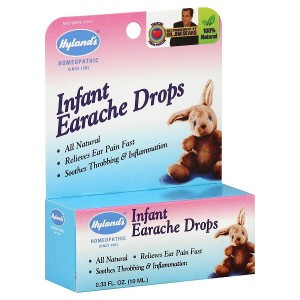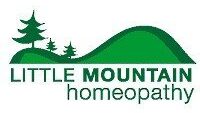Little Mountain Homeopathy Client Testimonial

I have had recurring ear infections and wanted to explore options that didn’t involve antibiotics, so I booked in at Little Mountain Homeopathy. My consultation with Sonya McLeod was thorough, exploring not only my immediate issue but my whole health profile. I had time and space to explore my health concerns, and received helpful guidance and information. Sonya is a perceptive and intuitive practitioner, and she gave me the confidence to enter into a more holistic approach to my looking after my body.
I received remedies that healed my current ear infection. More importantly I received guidance and research information that allowed me to move away from using statins. I was able to keep contact through email, and my queries were quickly and effectively dealt with. My health and general well being has improved and I am delighted with the outcome.
Tim Jones, 62 yrs
Vancouver, BC

Children (and adults) who are susceptible to ear infections can benefit from classical homeopathic treatment. Homeopathy strengthens the body’s immunity so that your child is less prone to ear infections. Homeopathy is also effective in the treatment of glue ear, and can also be used effectively to detox the overuse of antibiotics. Contact the clinic to make an appointment.
In cases of occasional or mild ear infections, homeopathy is very effective and can be used to treat ear infections at home:
Homeopathic Treatment for Ear Infections is Superior to Antibiotic Treatment and Placebo
Scientific Research Proves that Homeopathy is Effective for the Treatment of Ear Infections (Otitis Media)
The public health and individual risks of inappropriate antibiotic prescribing and conventional over-the-counter symptomatic drugs in pediatric treatment of acute otitis media (AOM) and upper respiratory infections (URIs) are significant. Clinical research suggests that over-the-counter homeopathic medicines offer pragmatic treatment alternatives to conventional drugs for symptom relief in children with uncomplicated AOM or URIs. Homeopathy is a controversial but demonstrably safe and effective 200-year-old whole system of complementary and alternative medicine used worldwide. Numerous clinical studies demonstrate that homeopathy accelerates early symptom relief in acute illnesses at much lower risk than conventional drug approaches. Evidence-based advantages for homeopathy include lower antibiotic fill rates during watchful waiting in otitis media, fewer and less serious side effects, absence of drug-drug interactions, and reduced parental sick leave from work. Emerging evidence from basic and preclinical science research counter the skeptics’ claims that homeopathic remedies are biologically inert placebos. Consumers already accept and use homeopathic medicines for self care, as evidenced by annual US consumer expenditures of $2.9 billion on homeopathic remedies. Homeopathy appears equivalent to and safer than conventional standard care in comparative effectiveness trials, but additional well-designed efficacy trials are indicated. Nonetheless, the existing research evidence on safety supports pragmatic use of homeopathy in order to “first do no harm” in the early symptom management of otherwise uncomplicated AOM and URIs in children.
The conventional antibiotic treatment of acute otitis media (AOM) faces a number of problems, including antibiotic resistance. Homeopathy has been shown to be capable of treating AOM successfully. As AOM has a high rate of spontaneous resolution, a trial to prove any treatment-effect has to demonstrate very fast resolution of symptoms. The purpose of this study was to find out how many children with AOM are relieved of pain within 12 h after the beginning of homeopathic treatment, making additional measures unnecessary. Two hundred and thirty children with AOM received a first individualized homeopathic medicine in the paediatric office. If pain-reduction was not sufficient after 6 h, a second (different) homeopathic medicine was given. After a further 6 h, children who had not reached pain control were started on antibiotics. Pain control was achieved in 39% of the patients after 6 h, another 33% after 12 h. This resolution rate is 2.4 times faster than in placebo controls. There were no complications observed in the study group, and compared to conventional treatment the approach was 14% cheaper.
In a prospective observational study carried out by 1 homoeopathic and 4 conventional ENT practitioners, the 2 methods of treating acute pediatric otitis media were compared. Group A received treatment with homoeopathic single remedies (Aconitum napellus, Apis mellifica, Belladonna, Capsicum, Chamomilla, Kalium bichromicum, Lachesis, Lycopodium, Mercurius solubilis, Okoubaka, Pulsatilla, Silicea), whereas group B received nasal drops, antibiotics, secretolytics and/or antipyretics. The main outcome measures were duration of pain, duration of fever, and the number of recurrences after 1 year, whereby alpha < 0.05 was taken as significance level. The secondary measures were improvement after 3 hours, results of audiometry and tympanometry, and necessity for additional therapy. These parameters were only considered descriptively. The study involved 103 children in group A and 28 children in group B, aged between 6 months and 11 years in both groups. For duration of pain, the median was 2 days in group A and 3 days in group B. For duration of therapy, the median was 4 days in group A and 10 days in group B: this is due to the fact that antibiotics are usually administered over a period of 8-10 days, whereas homoeopathics can be discontinued at an earlier stage once healing has started. Of the children treated, 70.7% were free of recurrence within a year in group A and 29.3% were found to have a maximum of 3 recurrences. In group B, 56.5% were free of recurrence, and 43.5% had a maximum of 6 recurrences. Out of the 103 children in group A, 5 subsequently received antibiotics, though homoeopathic treatment was carried through to the healing stage in the remaining 98. No permanent sequels were observed in either group.
The aim of the authors of this study was to compare the effectiveness of homeopathic treatment for acute respiratory and ear complaints with orthodox medical treatment for the same conditions. 1577 clients from 57 clinics from Austria, Germany, The Netherlands, Russia, Spain, Ukraine, the United Kingdom and the USA were enrolled in the study. They were asked to rate their response to either therapy at 14 days after beginning treatment. 86.9% of those given homeopathic medicines declared that they had had either a complete recovery or major improvement in their symptoms. 86% of those given orthodox medical treatment reported the same thing. Subgroup analysis found that 88.5% of children given homeopathics reported a complete recovery or major improvement in symptoms whereas 84.5% of those given orthodox medical treatment reported similar success. In addition, the onset of improvement within the first 7 days after treatment was significantly faster in those with homeopathic treatment, both in children and adults.
Case Examples by Richard Moskowitz, MD
Case 1. C. Z., a girl of 3, had had recurrent ear infections since the age of 5 or 6 months, typically associated with colds and the production of thick, green mucus, and requiring antibiotics more or less continuously for several months at a time. With no fever and at most a slight earache, she often became irritable and cranky as the cold ended, when the pediatrician often made the diagnosis by otoscope. Apart from mild eczema, the child was seldom ill other-wise, and rarely had the fevers or acute illnesses to be expected at her age. A strapping 8 lb. at birth, she fell short of 16 lb. at 1 year and had remained small for her age. Teething was late, painful, and difficult. She had had all the usual vaccines with no acute reaction.
I chose Calcarea Sulph.. 200, and two months later her mother reported the best winter ever, with no ear infections and two light colds that were quickly aborted with Calc. Sulph. 12C. I next saw her a year later, several weeks after an acute episode of wheezing in the middle of a cold, for which Pulsatilla 30X prescribed over the phone had worked splendidly. But though she had been free of ear infections in all that time, she had had a fever or two and was still plagued by quantities of thick greenish-yellow phlegm in her nose and throat. After one dose of Sulphur 200, she never came back. When I called recently, over five years later, in preparation for this talk, her mother told me that she had had no more ear infections, and there was no need to bring her back, since her general health had remained good, and the usual first-aid remedies had been very effective for the usual colds, fevers, and URI’s that had developed along the way.
I want to add a few comments about this rather typical case. First, as I reread it now, I doubt that either Calc. Sulph. or Sulphur was the best remedy for this patient, since she was on the chilly side, and even after treatment she continued to produce thick green phlegm and be subject to rather frequent colds. I can’t really defend or explain either prescription at this point. Yet her mother was more than satisfied. The ear infections disappeared and never came back, the long-term or constitutional issues stayed in the background, and the remedies she herself came up with continued to help without further assistance.
Notwithstanding the small remedies and “cured” cases that we like to parade at our conferences, I must admit that the bulk of my reputation is built on stories as generic and unspectacular as this one. I feel deeply grateful to a method that adds feathers to my cap even when I bumble or fall short.
Second, my experience confirms numerous reports in the European literature that most kids eventually outgrow their ear infections anyway, if simply allowed to do so without further allopathic interference.
Case 2. K. G.-S., a boy of 16 months, had already had five ear infections and five rounds of antibiotics when I first saw him. Only the first episode at six months was associated with fever (102.8° F.) and acute earache, which subsided promptly once the eardrum had perforated and discharged the pus that had accumulated behind it. Although weighing 7 lb. and appearing normal and healthy at birth, he was slow to nurse, fell behind in his gross motor development, had considerable discomfort with teething, and weighed only 20 lb. by the time I first saw him. His only other complaint was a chronic diarrhea that began on antibiotic treatment and had never gone away. Despite intense, prolonged crying after the first and second DPT’s, the third was uneventful, as was the MMR.
One month after Sulphur 10M, his mother reported that the diarrhea had worsened, becoming acute the first week after the remedy, but that, ever since a fever of 103° F. on the third day, his highest so far, he had had no symptoms of a cold or ear infection at all. Because of the diarrhea, I gave him Calc. Carb. 10M, and by the next visit, two months later, he was well, and had made good progress developmentally, with no ear infections, one brief cold for which Calc. Sulph. 12C worked well, and no more diarrhea.
I did not see him again for more than a year, four months after an episode of acute otitis with no earache but a fever of 103°F. that had lasted a full week on antibiotics. Apart from a few colds and a reappearance of diarrhea at these times, he had had no more ear infections and was continuing to grow and develop normally. Repeating Sulphur 10M, I had no further news of him until I asked my receptionist to call recently, more than five years later, and learned that he had been healthy, had had no ear infections, and needed no antibiotics throughout that time. After buying a remedy kit and studying on her own, the mother had found Belladonna to be highly effective for his various colds and acute illnesses, and no longer needed my help.
Once again, not for any elegant prescribing on my part, much less from any notion that the child was “cured,” I treasure cases like this one, because our work together helped the mother to take charge of her son’s health, and to perform competently in that role. When my own learned prescriptions fail, as they not seldom do, I have good reason to feel proud when the parents themselves find the remedies that work best for their child. Perhaps the most precious gift that homeopaths can offer is our relationships with our patients, which can continue to grow and flourish even when the search for the ideal remedy proves elusive.
Case 3. J. L., a girl of 6, had had frequent ear infections since the age of five months, especially when exposed to other kids in crowded day care or classroom settings. With little fever and no earache, the acute episodes were typically mild, with red cheeks, loss of appetite, and grumpy or irritable behavior. Also vulnerable to staying up late and to sudden changes of weather, she seldom ran fevers of any degree, the highest being around 102°F. with a “Strep throat,” but she had already taken antibiotics over two dozen times. Although vaccinated at the usual times without any obvious reaction, she developed an ear infection soon after her last DPT shot that had lasted for four months despite continuous antibiotics, and had subsided only after chiropractic treatment.
Soon after Sulphur10M, she developed a generalized rash that lasted several days, followed by a buoyant mood and more lively energy than she had shown in a long time. At her first follow-up, she had a cold, with the usual red cheeks, runny eye, temporary hearing loss, and the dreaded positive Strep culture. It required a considerable leap of faith for her mother to let this tiny cold run its course without antibiotics, using only Pulsatilla 30X as needed, and later buying a kit of remedies and a book to show her how to use them. Two months later, her pediatrician was happy to report and even take credit for the fact that her ears were uninfected for the first time that anyone could remember.
The following winter she returned with mild symptoms, a low fever, and a weakly positive Strep culture. As the illness subsided, I repeated Sulphur 10M, and by her next visit two months later the picture had changed to recurrent sore throats, foul breath, enlarged tonsils, dark circles under the eyes, and a loose, productive cough. This time I gave her Mercurius 1M, followed by the 10M a month later, with excellent results until her next cold many months later, when she developed the same swollen tonsils and loose cough as before. After the third dose of Sulphur 10M, I lost track of her for a few years, but the mother eventually called to report that she had been well the whole time, with no major colds and no ear infections, and a perfect attendance record at school for the year just finished. A few months ago, I called to check up and learned that she was doing splendidly in high school, with no more ear infections in the nine years since she had begun using remedies.
Second, her longest period of ear involvement followed a DPT shot, a connection that I have often verified in practice, but is rarely suspected by pediatricians, because vaccines are regarded as sacrosanct and almost risk-free, except for negligibly rare acute reactions developing within the first hours or days. Again leaving aside my rather crude prescribing in this case, I want to point out a few of the methodological issues it poses, issues so obvious and fundamental as to be easily overlooked. First, equating fluid behind the eardrum with an ear infection requiring antibiotic treatment ignores what every pediatrician knows, that most colds or URI’s with swelling of the tonsils or adenoids produce secondary congestion of the middle ear and temporary hearing loss as a result. The girl in this case was prone mainly to tonsillitis, and could be said to have ear infections only to the extent that pneumatic otoscopes can detect even minute amounts of fluid, and that years of deadly warfare against the nasopharyngeal bacteria have culminated in a Vietnam-like strategy of killing every living thing in the vicinity.
Third, like most of my chronic otitis patients, this child seldom ran fevers during the time she received conventional treatment, and began to do so only as her general condition improved. Useful both for reassuring the family and for making a simple prognosis, this humble fact carries a profound implication for the natural history of the disease and its recent evolution.
